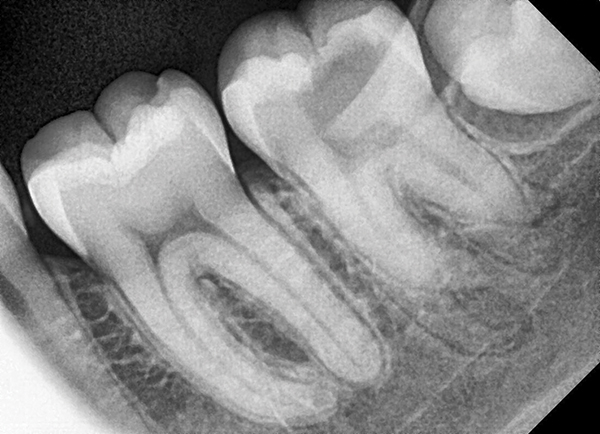A toothache could be a sign your molar needs a root canal — or molar endodontics, as dentists and endodontists might refer to it. Regardless, any sign of tooth discomfort means you should see a dentist — and fast! Unfortunately, at-home toothache remedies aren’t going to fix your problem — in fact, tooth decay will just continue to grow, which could lead to more costly dental problems or even tooth loss if not treated.
What is Molar Endodontics?
Molar endodontics is a common type of dental treatment in many dental offices. Of course, every procedure varies from patient to patient, but the typical molar endodontic treatment usually adheres to the following game plan.
Molar Root Canal Process
A local anesthesia is injected to numb the area and a rubber dam is placed in your mouth to protect the tooth from irritants.
Drilling— Your dentist drills a hole in the tooth’s crown to remove any existing tooth decay and open the pulp chamber. Removal of the Infected Pulp — Titanium files remove the pulp and dead nerves found within the tooth’s roots. During this time, an apex locator may be used to determine the length of each root. The apex locator uses sound waves to locate the end of the root, reducing the possibility of leaving any infection behind.
Root Cleaning — The root is cleaned and sterilized with an antibiotic gel. Your dentist may choose to use laser dentistry to better remove bacteria from the porous dentin that surrounds the empty root.
Filling — The roots’ walls are sealed to protect the tooth from irritation — the empty roots are then filled with gutta percha, a rubbery antibacterial material used specifically for endodontic procedures.
Dental Crown Preparation — Your dentist will prepare your tooth for a dental crown by taking an impression of the area and sending it to a dental laboratory for construction. In the meantime, your tooth will be capped with a temporary dental crown to protect the root canal.
Dental Crown Placement — During your follow-up appointment, your dental crown will be permanently cemented onto your tooth.
Molar endodontics may require more time and precision than root canal therapy performed in other areas of the mouth because molars contain more than one root. Although many dentists are trained to perform a molar root canal, more complicated cases may require an endodontist, or root canal specialist.
Regardless of how you feel about molar endodontics, if you need treatment, it’s important not to put it off. A molar root canal can get you out of pain and possibly prevent the need for a tooth extraction. So if you’re feeling a bit of discomfort in one of your molars (or any of your teeth, for that matter!), contact your dentist. Molar endodontic therapy will get to the root of your problem — and leave your tooth feeling as good as new again!

